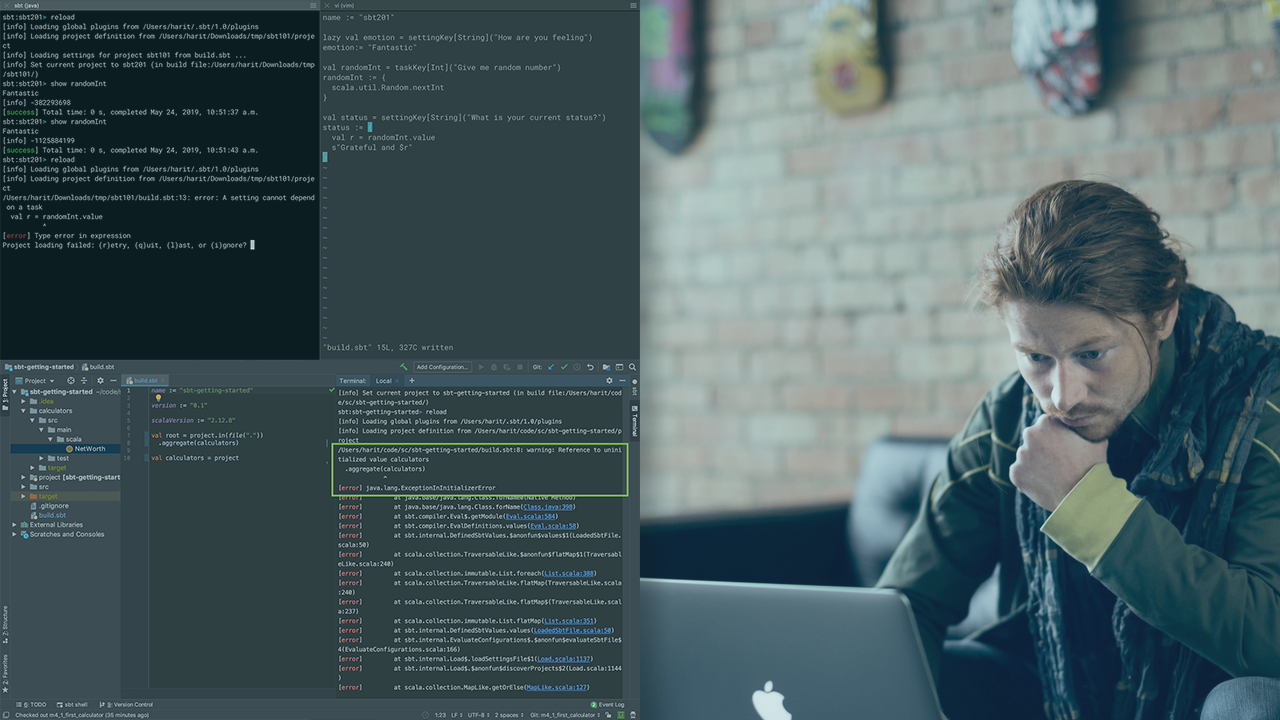- Course
Scala 1 Build Tool: Getting Started
Working with a stable and reliable build tool to create projects in Scala is extremely important to developer productivity. sbt offers a wide variety of features and extensibility as a build tool that can meet almost any project's requirements.

- Course
Scala 1 Build Tool: Getting Started
Working with a stable and reliable build tool to create projects in Scala is extremely important to developer productivity. sbt offers a wide variety of features and extensibility as a build tool that can meet almost any project's requirements.
Get started today
Access this course and other top-rated tech content with one of our business plans.
Try this course for free
Access this course and other top-rated tech content with one of our individual plans.
This course is included in the libraries shown below:
- Core Tech
What you'll learn
This course is well suited for software developers who are working or planning to contribute to a Scala codebase. Scala Build Tool (sbt) is a widely accepted Build Tool in the Scala Ecosystem, and the Scala language codebase itself is built and shipped with sbt. This course, Scala Build Tool: Getting Started, starts from the basics of working with the sbt shell; you'll learn about settings, tasks, scopes, build definition, multi-module builds, plugins, and working with 3rd party libraries. You will explore how to create a project from scratch, and add source files and tests. Next, you will discover how to compile and test your source code. Finally, you'll examine how to open-source your work in this project and deploy the executable API for anyone in the world to use. After taking this course, you will know the ins and outs of sbt, and will be comfortable starting or refactoring the codebases you work with.
Scala 1 Build Tool: Getting Started
-
Version Check | 10s
-
Overview | 43s
-
Why Learn sbt? | 2m 14s
-
What Are We Going to Cover in This Course? | 1m 29s
-
What We Will Not Cover in This Course | 50s
-
What Are the Course Prerequisites? | 57s
-
Installing sbt | 2m 49s
-
Installing IntelliJ IDEA | 2m 21s
-
How to Access Course Materials | 1m
-
Summary | 30s

